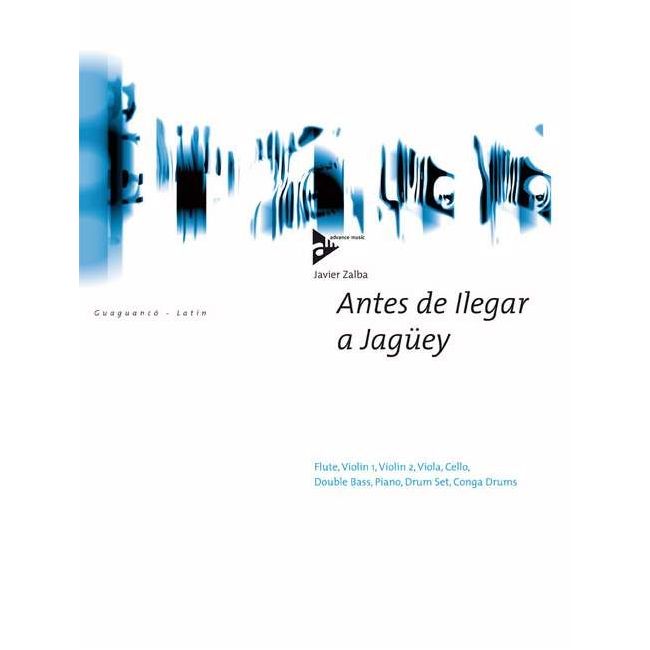| Pages | 58 |
|---|
| Publication Date | 1 January 2010 |
|---|
| Grade of Difficulty | advanced - difficult |
|---|
| ISMN | 9790206306549 (M206306549) |
|---|
| UPC | 805095060119 |
|---|
The composition “Antes de ilegar a Jagüey” (Before we came to Jagüey) was based on the travelling impressions my wife and I collected on our way to central Cuba. By the time we stopped in Jagüey, which is situated in the Province of Matanzas, this melody inspired with joyful emotions and comical situations was taking shape. Written in a guaguancó-latin style (in other words, in a mixture of two important genres in Cuban music, the guaguancó and latin jazz), special emphasis is placed on the syncopes and off-beats; the accents to be played are notated. It is these features that lend the particular rhyhmical character typical of our Cuban music to this piece.These styles are mainly defined by the performance of the rhythm and harmony section, with the percussion instruments being brought into focus; in this section it is especially the congas which dominate the guanguancó rhythm (making up part of the genre of Afrocuban rumba which has its roots in African music). The composition consists of the two melodic parts A and B, which are preceded by a “mambo” (in this case, the term “mambo” does not refer to the genre itself but to the “tumbao”, or what in jazz is usually called a “riff”) and lead up to the solos which might be interpreted within the concept of latin jazz. It is very important for the instrumentalist to maintain the “groove”- or as we say in Spanish “la marcha” - of the accompaniment while executing the solo. These solos are then followed by orchestra part C – mainly for strings and flute - which has to be played with the same intention by the complete band especially regarding articulations and accents. Part C in turn is followed by further solos (which might be executed according to the musicians’ individual taste and design). Finally, the theme is resumed at rehearsal mark B ending in unison.



